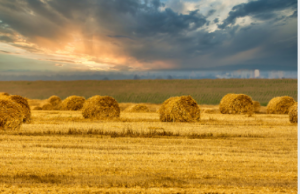Baling Twine, also known as baling twine, baling thread or baling yarn, is a thin diameter artificial or sisal thread used to bind straw or hay in bundles without laces tightly. The bales are then hung and left to dry. It takes about one week for fresh bales to be ready. Baling thread is straightforward to use. First, you need to make sure that you tie up all the loose ends of the thread. This way, the bale is well tied and tightly wrapped with the help of baling twine.
 The bales can be made of any type of fibre, including plastic, paper, cardboard, grass, straw etc. A popular bale made from straw is the barn weave bale. It has holes on all four sides, whereas plastic and paper bales have only one side hole. The advantage of using this type of fibre is that it has minimal air circulation because of the lack of holes.
The bales can be made of any type of fibre, including plastic, paper, cardboard, grass, straw etc. A popular bale made from straw is the barn weave bale. It has holes on all four sides, whereas plastic and paper bales have only one side hole. The advantage of using this type of fibre is that it has minimal air circulation because of the lack of holes.
To make a fine, tightly wrapped bale, you will require Baling Twine, heavy construction paper, safety scissors, a strong adhesive, and hot glue. Firstly, wash the paper with hot water and detergent to remove all the dust and dirt. Be careful to clean all surfaces with hot water and detergent. Then use the hot glue to attach the straw to the bales with the help of duct tape.
Once the bale is completely dried, cut along the bottom seam of the bale to make a slit for the head of the bale to come out. Use duct tape to seal the slit. The slit makes a perfect place for the head of the bale to come out. Next, cut other slits along the top of the bale. It will allow the bale to be tied at the bottom.
If you prefer not to make your baling twine, you can buy ready-made baling twines from most craft stores or Oriental stores. These are also available in different sizes. Ready-made ones have been designed for use on hay bales and small square baskets. However, if you would like something a bit more personal and different, you can make your own. It is very easy to do and can be a great way to save money. It can also be much more satisfying to hand stitch something on your own instead of having to order it from far away.
You will need baling twines of varying widths to stretch the straw evenly. If you use a larger width, Baling Twine, make sure you leave at least an inch of extra material at the end. If you do not use enough, your square-shaped bale will become uneven. Be careful not to cut off the bottom length too short, though, as this can cause the bottom edge of your finished product to stick up too much. If you are a perfectionist, you might even want to cut off the extra material at the edge of each side of the square bale to give it that perfect seal.
The finished product, once stitched and secured, should be pretty attractive. It will add a special touch to any outdoor space, whether it is a garden, porch, deck, or even an entranceway to your home. For ideal results, be sure to order your baling twine a few months in advance, as these products can only be delivered to you within a few days. As they are trendy, they tend to run out very fast. Therefore, you should plan on having enough baling twine to finish your project approximately two weeks in advance.
In addition to using bales to keep your belongings dry and protected, you can also make them more attractive by adding sisal rope to them. Sisal rope looks excellent in any area where you would like to create an illusion of width, for example, adding a wide baling twine border to one edge of an archway or a border of smaller sisal bales on either side of a narrow table. They will add extra charm to any space.

